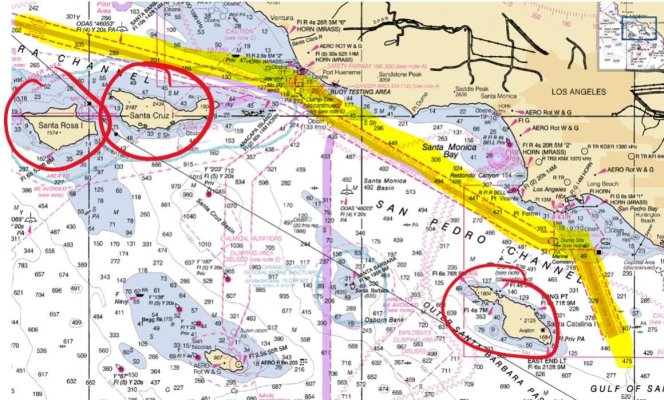socalrider
Guru
- Joined
- Feb 14, 2020
- Messages
- 1,011
- Location
- usa
- Vessel Name
- SEA WOLF
- Vessel Make
- 1979 CHB 41 Trawler
Hi all,
We're in the process of setting up our new-to-us '79 CHB 41 trawler for this summer cruising the channel islands. It's been well cared for over its long life so most of the systems are serviceable and ready to go.
The previous owner stripped out most of the old obsolete electronics and wiring, which is nice. I'm deciding what to add back. For this summer at least we're likely going to be doing nothing more than short (4hr, maybe 8 max) coastal hopping here in SoCal in our normal calm summer conditions.
Later on we might go farther north or south and may want to add radar, AIS, etc. I'll use apple devices with iSailor, paper charts & my nice Steiner binoculars w/compass for navigation. I just confirmed that the 1990 Navico PowerPilot pump electronics are malfunctioning so for now the most urgent piece of kit is a simple autopilot.
So I went ahead and ordered a Raymarine EV-150 from Hodges: https://www.hodgesmarine.com/rayt70330-raymarine-evolution-ev150-hydraulic-autopilot-s.html
The pump size is right, the price is great, and I can add stuff onto it as required (including rudder angle sensor).
Question: any advise on a second control head? I have upper and lower helms so will eventually need something. My options seem to be either a second control head, a wireless remote, or a MFD.
The control heads are almost as much as a small MFD (around $500), which would also allow me to download software updates without bringing the unit to a dealer. The wireless remote isn't much cheaper and looks pretty limited. I also appreciate the safety advantage of having a dedicated control head with a big button to disengage.
Thoughts/criticism welcome!
We're in the process of setting up our new-to-us '79 CHB 41 trawler for this summer cruising the channel islands. It's been well cared for over its long life so most of the systems are serviceable and ready to go.
The previous owner stripped out most of the old obsolete electronics and wiring, which is nice. I'm deciding what to add back. For this summer at least we're likely going to be doing nothing more than short (4hr, maybe 8 max) coastal hopping here in SoCal in our normal calm summer conditions.
Later on we might go farther north or south and may want to add radar, AIS, etc. I'll use apple devices with iSailor, paper charts & my nice Steiner binoculars w/compass for navigation. I just confirmed that the 1990 Navico PowerPilot pump electronics are malfunctioning so for now the most urgent piece of kit is a simple autopilot.
So I went ahead and ordered a Raymarine EV-150 from Hodges: https://www.hodgesmarine.com/rayt70330-raymarine-evolution-ev150-hydraulic-autopilot-s.html
The pump size is right, the price is great, and I can add stuff onto it as required (including rudder angle sensor).
Question: any advise on a second control head? I have upper and lower helms so will eventually need something. My options seem to be either a second control head, a wireless remote, or a MFD.
The control heads are almost as much as a small MFD (around $500), which would also allow me to download software updates without bringing the unit to a dealer. The wireless remote isn't much cheaper and looks pretty limited. I also appreciate the safety advantage of having a dedicated control head with a big button to disengage.
Thoughts/criticism welcome!


